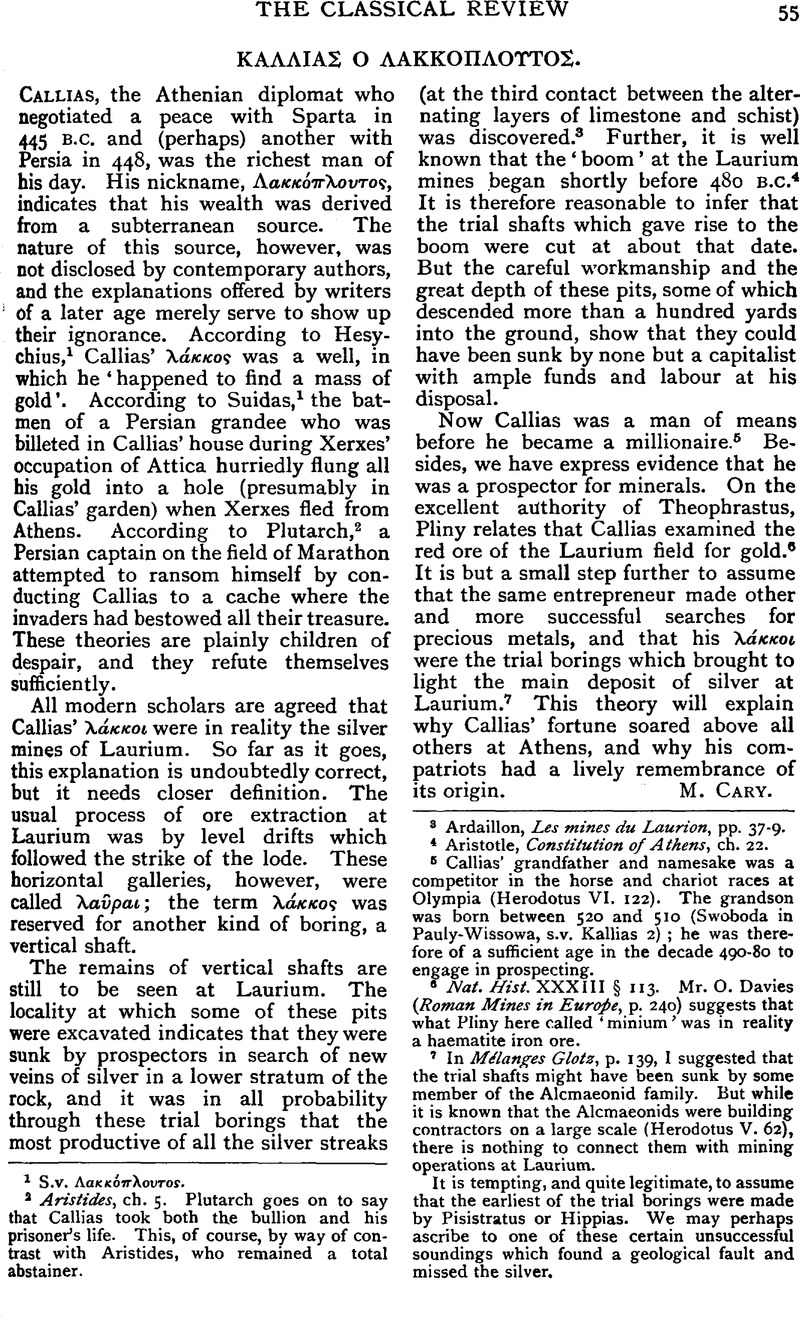No CrossRef data available.
Article contents
Abstract

- Type
- Review Article
- Information
- Copyright
- Copyright © The Classical Association 1936
References
1 S.v. Λακκ៹πλουτος.
2 Aristides, ch. 5. Plutarch goes on to say that Callias took both the bullion and his prisoner's life. This, of course, by way of contrast with Aristides, who remained a total abstainer.
3 Ardaillon, Les mines du Laurion, pp. 37–9.
4 Aristotle, Constitution of Athens, ch. 22.
5 Callias' grandfather and namesake was a competitor in the horse and chariot races at Olympia (Herodotus VI. 122). The grandson was born between 520 and 510 (Swoboda in Pauly-Wissowa, s.v. Kallias 2) ; he was therefore of a sufficient age in the decade 490–80 to engage in prospecting.
6 Nat. Hist. XXXIII § 113. Mr. O. Davies (Roman Mines in Europe, p. 240) suggests that what Pliny here called ‘minium’ was in reality haematite iron ore.
7 In Mélanges Glotz, p. 139, I suggested that the trial shafts might have been sunk by some member of the Alcmaeonid family. But while is known that the Alcmaeonids were building contractors on a large scale (Herodotus V. 62), there is nothing to connect them with mining operations at Laurium.
It is tempting, and quite legitimate, to assume that the earliest of the trial borings were made Pisistratus or Hippias. We may perhaps ascribe to one of these certain unsuccessful soundings which found a geological fault and missed the silver.


